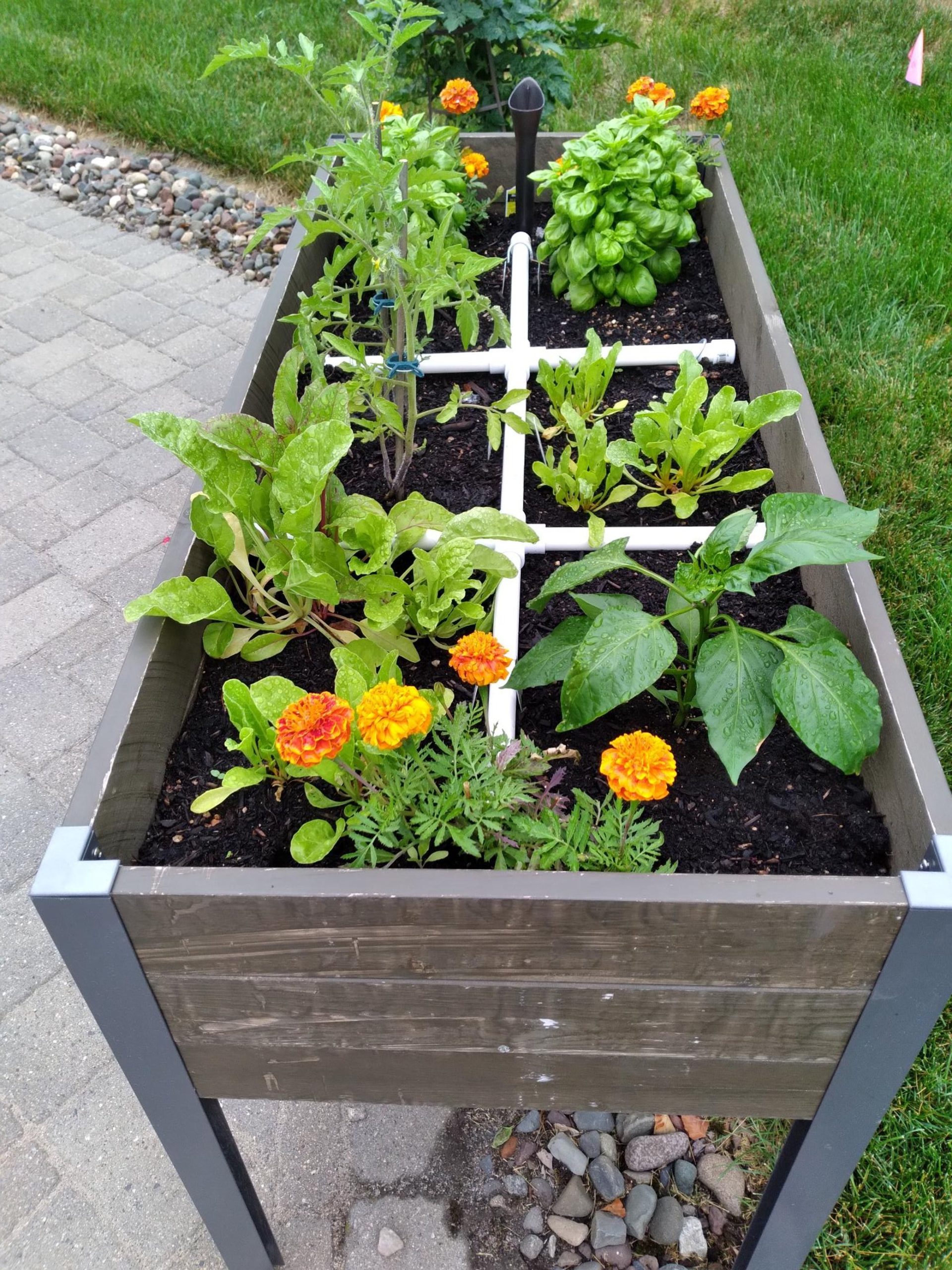
To be a successful garden owner, focus on proper planning and maintenance. Choose the right plants for your climate and soil to ensure success.
The key to successful garden ownership lies in attention to detail and consistent care. By following these natural guidelines, you can turn your garden into a thriving, enjoyable space for yourself and others. Remember that gardening is a continuous learning process, but by staying informed and being proactive, you can reap the rewards of a beautiful and bountiful garden.
It’s important to be patient with your garden, as it may take time to see the results of your efforts. Through dedication and a bit of trial and error, you can become a successful garden owner.
Understanding Your Garden Space
Understanding your garden space is crucial to becoming a successful garden owner. Assessing sunlight and shade, performing soil analysis and preparation are essential elements in creating a thriving garden. Let’s explore each aspect in detail.
Assessing Sunlight And Shade
Assessing the amount of sunlight and shade your garden receives is vital for successful plant growth. Identify areas that receive the most sunlight and those that are shaded throughout the day. Certain plants thrive in full sun, while others require partial or full shade. Consider creating a diagram or using an app to track sunlight patterns in your garden space. This will help you understand which plants will flourish in different areas of your garden.
Soil Analysis And Preparation
Conducting a thorough soil analysis is fundamental for a successful garden. Test the soil’s pH levels, nutrient composition, and drainage capacity. You can use at-home test kits or consult with a professional to analyze your soil. Based on the results, prepare the soil by adding organic matter, compost, or other soil amendments to improve its quality. Laying a solid foundation of healthy soil will provide the ideal conditions for your plants to thrive.
Selecting The Right Plants
Choosing the right plants for your garden is a crucial step in ensuring its success. By selecting vegetation that thrives in your specific climate and understanding their compatibility and growth requirements, you can create a thriving and beautiful garden space.
Choosing Climate-appropriate Vegetation
When selecting plants for your garden, it’s essential to consider the climate in which they will be growing. Native plants often thrive in their natural climate, requiring less maintenance and water. Additionally, consider the hardiness zone of your location, ensuring that the plants you choose are suitable for the temperature and environmental conditions of your area. This will help to ensure that your garden remains healthy and resilient against the nuances of the local climate.
Understanding Plant Compatibility And Growth Requirements
Every plant has its own growth requirements in terms of sunlight, water, soil type, and pH levels. Before planting, it’s essential to research each plant’s requirements to ensure they are compatible with one another in the garden space. Some plants may require full sunlight while others thrive in shaded areas, so careful planning is necessary to create a harmonious and thriving garden ecosystem. Take note of the spacing requirements for each plant to ensure they have enough room to grow without overcrowding, thereby maximizing their growth potential.
Establishing An Effective Maintenance Routine
Establishing an effective maintenance routine is crucial for being a successful garden owner. A consistent and well-planned maintenance routine not only ensures the health and beauty of your garden but also saves you time and effort in the long run. In this section, we will discuss the key elements of maintenance, including watering schedules and best practices, as well as pest and disease management strategies.
Watering Schedules And Best Practices
Proper watering is essential for the overall health and vitality of your garden. Setting up a regular watering schedule based on the unique needs of your plants is crucial. Consider the type of plants, soil conditions, and local climate when determining the frequency and amount of water needed. It’s also important to water during the optimal times of the day, typically early morning or late afternoon, to minimize evaporation and ensure maximum absorption.
- Check soil moisture regularly to avoid over or under watering.
- Use mulch to retain moisture and reduce the frequency of watering.
- Invest in an irrigation system for efficient and automated watering.
Pest And Disease Management Strategies
Protecting your garden from pests and diseases is a critical aspect of maintenance. Implementing preventive measures and early detection can help safeguard your plants and minimize the risk of infestation or disease outbreak. Consider utilizing natural remedies and environmentally friendly products to minimize the impact on the ecosystem. Additionally, regular inspection and proper sanitation can significantly reduce the likelihood of pest and disease issues.
- Encourage beneficial insects as a natural pest control method.
- Rotate crops to disrupt pest life cycles and reduce disease spread.
- Prune and remove infected or infested plants to prevent further spread.
Implementing Sustainable Practices
Implementing sustainable practices in your garden is not only beneficial for the environment but also for the health and longevity of your plants. By incorporating eco-friendly methods into your gardening routine, you can reduce your environmental impact and create a healthier, more vibrant garden space.
Organic Fertilization And Weed Control
Organic fertilization is essential for promoting the long-term health of your garden. By utilizing natural fertilizers such as compost, manure, and organic plant-based fertilizers, you can nourish your soil without introducing harmful chemicals. These natural fertilizers provide essential nutrients to your plants while enriching the soil, promoting beneficial microbial activity, and reducing the risk of nutrient runoff.
Similarly, implementing organic weed control methods helps to maintain a healthy and chemical-free garden environment. This can include hand-pulling weeds, mulching, or using natural herbicidal solutions such as vinegar-based sprays, which are effective in controlling weeds without harming the surrounding vegetation.
Water Conservation Methods
Conserving water is a crucial aspect of sustainable gardening. By adopting water-efficient practices, you can minimize water wastage while ensuring that your plants receive the necessary moisture for healthy growth. Drip irrigation systems, rain barrels, and efficient watering schedules can help to maximize the use of water resources and reduce unnecessary water consumption.
In addition, incorporating mulch around your plants can provide numerous benefits, including conserving moisture, suppressing weed growth, and regulating soil temperature. By using mulch, you can create a more sustainable and resilient garden ecosystem.
Utilizing Proper Tools And Equipment
Utilizing the proper tools and equipment is essential to becoming a successful garden owner. Whether you are a newcomer or a seasoned gardener, having the right tools for the job can make a significant difference in the success of your garden. From planting and pruning to weeding and watering, having the appropriate tools and equipment is crucial for maintaining a healthy and vibrant garden.
Essential Gardening Tools For Various Tasks
When it comes to gardening, having the right tools for the job can make all the difference. Here are some essential gardening tools for various tasks:
- Hand Trowel: Ideal for planting small flowers, vegetables, and herbs.
- Pruning Shears: Essential for trimming and shaping bushes, shrubs, and small trees.
- Garden Hoe: Effective for breaking up soil and removing weeds.
- Watering Can: Essential for providing plants with the right amount of water.
- Garden Rake: Useful for spreading soil, leveling the ground, and removing debris.
- Garden Gloves: Protect your hands from thorns, prickly plants, and soil while gardening.
- Pruning Saw: Essential for cutting through thicker branches and stems.
Maintenance And Storage Of Gardening Equipment
Proper maintenance and storage of gardening equipment are essential to ensure their longevity and effectiveness. Here are some tips for maintaining and storing your gardening tools and equipment:
- Clean and dry: After each use, make sure to clean the dirt and debris off your tools and dry them thoroughly to prevent rusting.
- Sharpen regularly: Keep the edges of your pruning shears and other cutting tools sharp to ensure clean and precise cuts.
- Store in a dry place: Store your tools in a dry area to prevent rust and deterioration.
- Organize and tidy: Invest in a tool rack or storage shed to keep your gardening equipment organized and easily accessible.
- Oil moving parts: Apply a thin layer of oil to the moving parts of your tools to prevent friction and corrosion.
Encouraging Biodiversity
Encouraging biodiversity in your garden is not just beneficial for the environment, but also for the health and beauty of your garden. By creating a space that invites a wide range of plant and animal species, you can contribute to a sustainable ecosystem right in your backyard. Here’s how you can achieve this by creating a habitat for beneficial insects and attracting and supporting local wildlife.
Creating A Habitat For Beneficial Insects
Beneficial insects play a crucial role in maintaining a balanced ecosystem within your garden. Not only do they help control pest populations, but they also aid in pollination, which is essential for the reproduction of many plants.
- Allow native plants to thrive in your garden as they attract a diverse range of beneficial insects.
- Install insect hotels to provide a safe habitat for beneficial insects to shelter, reproduce, and overwinter.
- Avoid using chemical pesticides that may harm beneficial insects. Instead, opt for natural pest control methods to maintain a healthy balance in your garden.
Attracting And Supporting Local Wildlife
Local wildlife can greatly enrich the biodiversity of your garden while contributing to a sustainable ecosystem. By creating a welcoming environment, you can attract and support various wildlife species.
- Provide food sources such as native plants, bird feeders, and water features to attract and sustain local wildlife.
- Create shelter by incorporating shrubs, trees, and nesting boxes to offer protection and nesting spaces for birds, mammals, and other wildlife.
- Avoid chemical use to safeguard the health of the local wildlife that depends on the resources within your garden.
Embracing Continuous Learning
Embracing continuous learning is a key factor in becoming a successful garden owner. As the gardening world continuously evolves, staying updated on techniques and participating in community events and workshops can significantly contribute to your success as a garden owner. Let’s delve into the essentials of continuous learning in the realm of gardening.
Researching And Staying Updated On Gardening Techniques
Staying informed about the latest gardening techniques can elevate your gardening skills and contribute to the overall health and beauty of your garden. Regularly engaging in research through reputable sources, such as gardening books, online forums, and blogs, can broaden your knowledge base and inspire new ideas for your own garden. Keeping abreast of advancements in sustainable gardening practices and pest control methods is vital for maintaining a thriving garden ecosystem. Additionally, subscribing to newsletters and following influential gardeners on social media platforms can provide valuable insights and updates on innovative gardening methods.
Participating In Community Gardening Events And Workshops
Engaging with the local gardening community through events, workshops, and gardening clubs presents invaluable opportunities to learn from experienced gardeners and industry professionals. These events provide a platform for sharing experiences, exchanging gardening tips, and discovering the best practices in horticulture. By actively participating in community gardening events, you can gain practical insights and hands-on experience that can enhance your gardening skills and expand your plant knowledge.
Frequently Asked Questions For How To Be A Successful Garden Owner
How Much Sunlight Does A Garden Need?
To thrive, most plants need at least 6 hours of sunlight per day. However, some shade-loving plants can thrive with less sunlight. Assess your garden’s sun exposure and choose plants accordingly for success.
What Are Some Low-maintenance Garden Plants?
Low-maintenance plants like succulents, ornamental grasses, and native perennials can thrive with minimal care. Choose plants that are suited to your climate and soil type for an easy-to-manage garden.
How Can I Prevent Pests From Damaging My Garden?
Implement natural pest control methods such as companion planting, using insect-repelling plants, and maintaining good garden hygiene. Regularly inspect your plants for signs of pests and address any issues promptly to protect your garden.
Conclusion
To achieve a flourishing garden, consistency and dedication are key. By embracing the principles of proper watering, pruning, and pest control, you can foster a thriving garden space. Remember to stay informed on best practices and adapt to the needs of your specific plants.
With effort and knowledge, you can create a beautiful and bountiful garden oasis.






